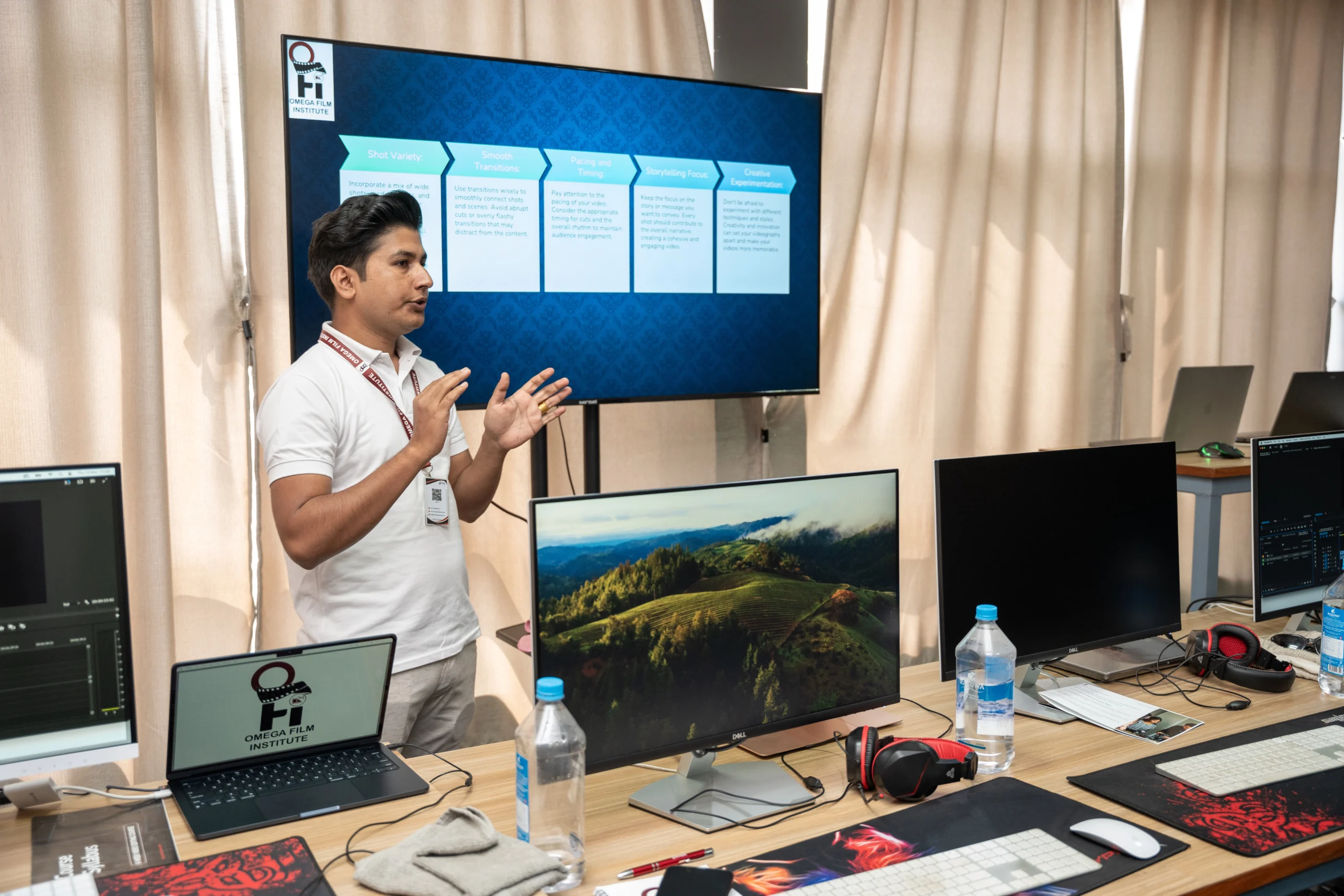Camera to Cloud: Transforming Video Production Through Real-Time Workflow Innovation

In today’s fast-paced digital content landscape, speed and efficiency are everything. One of the most groundbreaking advancements in video production is the Camera to Cloud workflow—a real-time method of transferring footage directly from the camera to the cloud. This innovation has transformed how videographers, editors, and post-production teams collaborate. At Omega Film Institute, Nepal’s leading video editing school, we prepare students for the future of production by introducing them to the latest tools and techniques, including the Camera to Cloud workflow.
This blog explores the benefits, challenges, and practical implementation of the Camera to Cloud workflow in modern filmmaking and content creation. With keywords like “Camera to Cloud workflow,” “real-time video editing in Nepal,” and “Omega Film Institute training,” this post is optimized to help rank at the top of search results for video professionals in Nepal.
What Is Camera to Cloud?
Camera to Cloud (C2C) refers to the process of automatically uploading footage to the cloud as it’s being recorded. This system allows editors, clients, and collaborators to access, review, and even begin editing content within moments of capture.
How It Works:
- Connected Camera or Device: Footage is captured using a compatible camera or external device (e.g., Atomos Ninja V+).
- Internet Connectivity: The device must be connected to Wi-Fi or mobile data.
- Cloud Integration: Video files are instantly uploaded to a cloud platform (like Frame.io or Adobe Creative Cloud).
- Remote Access: Editors and collaborators can immediately access, organize, and begin post-production.
Why It’s a Game-Changer for Video Production
1. Real-Time Collaboration
Gone are the days of waiting for hard drive transfers or courier deliveries. C2C allows real-time review of footage—even while a shoot is ongoing.
- Direct Client Feedback: Clients can review scenes live and provide input instantly.
- Editor Access: Post-production begins while shooting is still in progress, drastically reducing turnaround time.
2. Faster Turnaround for Projects
For events, news, or social media content, speed matters. C2C enables same-day edits and publishing.
- News Outlets: Immediate uploads make it easier to publish breaking news.
- Event Videography: Wedding videographers or corporate film producers in Nepal can deliver teasers or highlights the same day.
3. Remote Work Friendly
With global teams and hybrid workflows becoming the norm, Camera to Cloud supports remote collaboration without compromising efficiency.
- Cross-Border Projects: Collaborate with editors or directors outside of Nepal in real time.
- Distributed Teams: Whether you’re on set in Kathmandu or editing in Pokhara, the cloud keeps everyone connected.
Popular Tools and Platforms That Support Camera to Cloud
1. Frame.io (now part of Adobe)
- Integrations: Works with ARRI, RED, Atomos, and more.
- Features: Review tools, timestamped comments, seamless Adobe Premiere Pro integration.
2. Atomos Connect + Ninja V/V+ Monitors
- Function: Converts HDMI cameras into C2C-compatible tools.
- Connectivity: Enables real-time proxy uploads.
3. Teradek Serv Series
- Usage: Often used in high-end commercial and film productions.
- Benefit: Streams directly to cloud-based platforms and supports collaborative playback.
4. Sony Ci Media Cloud
- Functionality: Sony’s own cloud-based media review and delivery service for professionals.
Challenges and Considerations
While C2C technology is powerful, it’s not without limitations:
1. Internet Reliability
- Nepal-Specific Note: In rural areas or mountainous regions, limited internet access can hinder real-time uploads.
- Solution: Use local storage for backups and schedule batch uploads when stronger connectivity is available.
2. File Management
- Proxy Files: Most systems upload lower-resolution proxies for speed.
- Master Files: Still need to be backed up and uploaded separately for final delivery.
3. Learning Curve
- Tech Integration: Proper setup requires understanding camera settings, codecs, and upload workflows.
- Training Required: Omega Film Institute covers modern workflow training, including C2C, in our professional editing courses.
How Omega Film Institute Prepares You for Camera-to-Cloud Workflows
At Omega Film Institute, we don’t just teach video editing—we train students to become modern media professionals. Our curriculum includes:
- Real-Time Editing Projects: Students simulate real-world scenarios with proxy files and cloud access.
- Tool Mastery: Training on Adobe Premiere Pro, Frame.io, and DaVinci Resolve.
- Collaborative Workflows: Group projects with live reviews and feedback to mimic industry environments.
- Cloud Storage and File Management: Best practices for organizing assets, backups, and cloud collaboration.
Conclusion
The Camera to Cloud workflow marks a turning point in how video content is captured, reviewed, and edited. By enabling near-instant access to footage, it accelerates production timelines, supports real-time collaboration, and allows professionals to work more efficiently, no matter where they are.
For content creators, filmmakers, and editors in Nepal, embracing this technology offers a competitive edge in a rapidly modernizing industry. And for students at Omega Film Institute, gaining hands-on experience with Camera to Cloud workflows ensures they graduate ready for the future of video production.
Interested in mastering next-generation video workflows? Enroll at Omega Film Institute today and gain access to practical training, real-world projects, and tools that empower you to lead in Nepal’s media and film industries. Visit Omega Film Institute to learn more about our courses and upcoming sessions.
